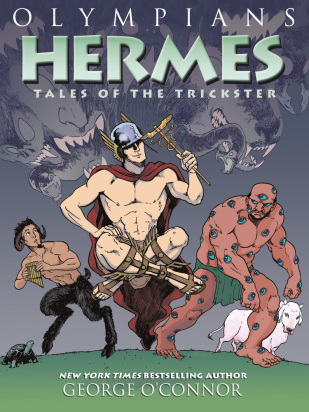
The Millions, March 6, 2017.
As I wrote this, from the corner of my eye, I could see CNN providing coverage of a gargantuan hurricane, racing resolutely towards the eastern coastal arc of the U.S., extending from Florida all the way up to the Carolinas. The footage shows fierce winds roiling the waters of the Atlantic; wave after wave, crashing against the shore, slopping out over the edge of the sea wall.
It could have been an event such as this that prompted J.G. Ballard to write “The Drowned World”—a forerunner of a genre, dubbed in the 21st century as “climate-fiction”—in which he paints a nightmare landscape, where the seas have swelled and swallowed up the land.
Marine biologist Robert Kerans is a member of a United Nations military team, mapping the drowned harbors for future reoccupation. As they make their way in a catamaran, they enter a “wide circle of dark green water” through whose layers they can see the “outlines of buildings looming like giant ghosts.” A straight gray promenade stretched away between the buildings, the remains of some former thoroughfare; the rusting humped shells of cars still standing by the curb.” That’s a lagoon. Beneath it is a “spectral” metropolis: London. The British capital had sunk sometime in the “closing years of the second millennium.”
All over the world, mean temperatures rose till the polar ice caps melted and the glaciers turned into torrential rivers and the contours of the continents were altered. At around 350 Fahrenheit, the equator had become a veritable oven. “Europe became a system of giant lagoons.” The American Midwest had become an “enormous gulf opening into the Hudson Bay.” Only the polar regions offered a feeble refuge from the encroaching searing heat.
As the mercury soared and the air boiled, the fauna and flora rapidly reverted to what they were during the Triassic, a geological period that ended 200 million years ago. The wheat fields of the temperate climes had been overrun by dense groves of towering calamites, ferns, horsetails, clubmosses, transforming them into Amazon-like rainforests on steroids. Darwinism dictated that creatures better adapted to a life in jungles, swamps and lakes flourished; those not, perished. Iguanas “perched in the windows of the office blocks and department stores.”
Today, there’s a growing worry that rising oceans will inundate low-lying areas around the world. It’s now known—at least, to some—that the agent of the recent climate-change is the result of industrial and post-industrial humankind. Over time, the relentless release of greenhouse gases (those that trap heat) has taken its toll on the planet.
Three years ago, the concentration of carbon dioxide in the atmosphere had reached an average daily level of above 400 parts per million, a number last known to have existed during an epoch called the Pliocene. The New York Times reported that experts feared that more emissions could trigger a return to primitive climate conditions.
Writing in 1962, in envisioning that the global climate would be thrown off-kilter, of course, Ballard is prescient, but his foresight likely came out of his rumination on the fate of the planet, not environmental study. In this particular novel, he attributes the alarming shift in Earth’s ecosystem to “a series of violent and prolonged solar storms,” triggered by a “sudden instability of the Sun.” Humans have no role in the apocalypse in Ballard’s story.
His thoughts, in this regard, have shades of H.G. Wells. In “Time Machine” (1895), as the temporal tourist travels forward in time, he remarks how much hotter it was in the future than it is in his own age. He can’t understand why that should be so, but he reasons: “It may be that the Sun was hotter or the Earth nearer the Sun.”
“Planets must ultimately fall back one by one into the parent body. As these catastrophes occur, the Sun will blaze with renewed energy; and it may be that some inner planet had suffered this fate. Whatever the reason, the fact remains that the Sun was very much hotter than we know it.” As he journeys, he watches the Sun grow bigger and bigger till it filled the sky. It “halted motionless upon the horizon, a vast dome, glowing with a dull heat.” Sometime, in the very distant future, it comes to obscure a good slice of the heavens.
The narrative of “The Drowned World,” likewise, is laden with the fiery power of the Sun and its engorgement. It’s no longer a “sphere,” but a “wide, expanding ellipse that fanned out across the eastern horizon like a colossal fireball.” It “filled the sky, turning it into an enormous blowtorch.” It even takes the form of an organic entity, pulsing, its “volcanic pounding” beckoning men to sail south as if it were a beautiful siren.
It’s not clear what president Donald Trump knows or thinks about climate-change, but he has called global warming a “hoax,” insisting that he’s not a believer in man-made climate change. There, he and the Republicans would be in agreement with both Ballard and Wells.
In most works with the science-fiction postmark, typically, victims flee from a cataclysm. Not in this. One fine day, when a swashbuckling buccaneer and his crew pull off a feat of derring-do by resurrecting the lost metropolis and London emerges “like an immense intact Atlantis,” the reaction of the last human survivors to it is not one of joy and relief, but total repugnance. They regard it as a hellish, “drained and festering sewer” and do nothing to reclaim it. Instead, they choose to stay in their surreal, silent, waterlogged reality. Their willful surrender to it stems from their staunch belief that it’s an act of god, in the face of which resistance is futile, even unwarranted.

Nathaniel Rich’s “Odds Against Tomorrow” is a tale in the same tradition. Published more than 50 years later, it proves what a difference half a century can make. A much-touted eco-fiction, it, like “The Drowned World,” is about a meteorological anomaly, but one that’s far more plausible. It takes place, where else, but New York?
A powerful hurricane makes landfall in the New York Bight. In its wake, all five boroughs of New York are battered, Manhattan being the hardest hit. The East River and the Hudson, which flank the slender island surge and converge in its middle, flooding it entirely. The United Nations Secretariat, a building built on bedrock called the Manhattan schist dips below sea level, turning into a “sunken ship in the East River.” The two-tiered concourse of the Grand Central turns into a “lake—or a sea, since it was impossible to perceive its boundaries.”
Rich marries calamity with capital. Mitchell Zukor, a young math whiz, is an economic Cassandra, of sorts. His job at a futurist concern, housed in the Empire State Building, is to forecast a myriad hazards—everything from asteroid strike to biological warfare to solar storm to pestilence to cyberwarfare—so that businesses can inoculate themselves against them, should they come to pass. When the storm strikes, though, no one is prepared. But Zukor is better equipped to navigate it only because of a luxe purchase: a canoe.
As in the “The Drowned World,” in this book too, the land becomes very, very hot before the deluge. The “whole Northeast was blanched; wilting.” There had been no rainfall, leading to a prolonged drought reminiscent of the Dust Bowl. The air was heavy with thick, black dust, forcing people to wear masks, now sold by bodegas.
Unlike both Ballard and Wells, Rich holds man squarely responsible for this ecological mishap, blaming it on his insensate greed to build on grounds reserved for fauna and flora. In its aftermath, the state government decides to let the soggy, peripheral wastelands in Brooklyn to return to swampland as it once was before the colonizers arrived.
Ballard gives a fatalistic shrug at a bleak future, asking man to become one with nature. Rich, on the other hand, calls for a distinct separation of spheres, urging us to co-exist with it as equal partners.
Advertisements Share this:




